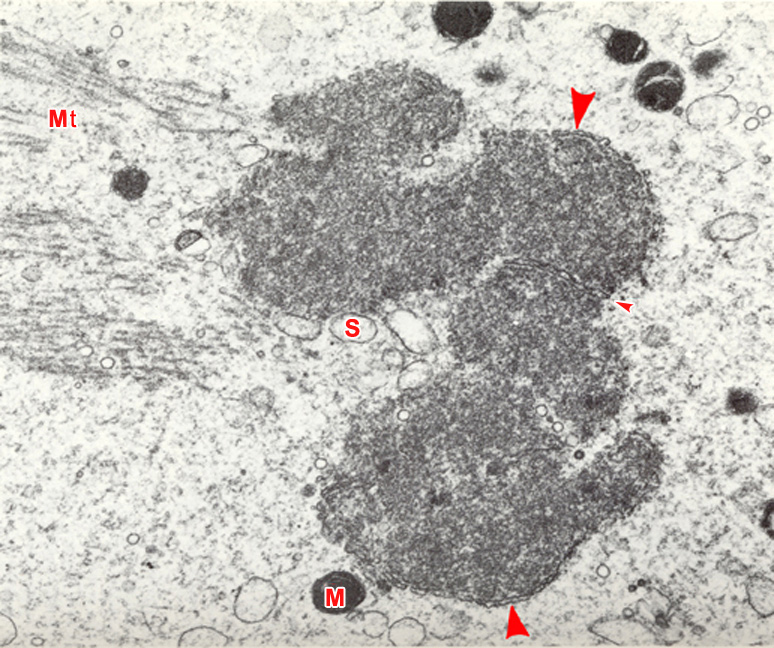
Very high power TEM of an early stage 1b embryo in vitro, 3 hours post-insemination showing the developing maternal pronucleus and the embryo end of the second meiotic spindle (original magnification x33,810). The chromatids have fused and are organizing into a maternal pronucleus. Smooth endoplasmic reticulum vesicles (S) are associated with the surface of the chromatin. Some have flattened to form parts of the pronuclear envelope (large arrowheads). This process is similar to what is seen in the formation of the paternal pronucleus which takes place simultaneously. A stretch of assembled envelope is trapped within the decondensing chromatin mass (small arrowhead). This may be the origin of intranuclear annulate lamellae whose structure is identical to the envelope and cytoplasmic annulate lamellae. Microtubules (Mt) at the embryo end of the meiotic spindle are still closely associated with the chromatin. Mitochondria (M) are dense and contain few cristae as in unfertilized oocytes.
From: Lopata et al., 1980. Reproduced with permission of the American Society for Reproductive Medicine.
Keywords: chromatids, cristae, cytoplasmic annulate lamellae, intranuclear annulate lamellae, maternal pronucleus, meiotic spindle, microtubules, oocyte, paternal pronucleus, pronuclear envelope, pronucleus, second meiotic spindle, stage 1b embryo
Source: The Virtual Human Embryo.
